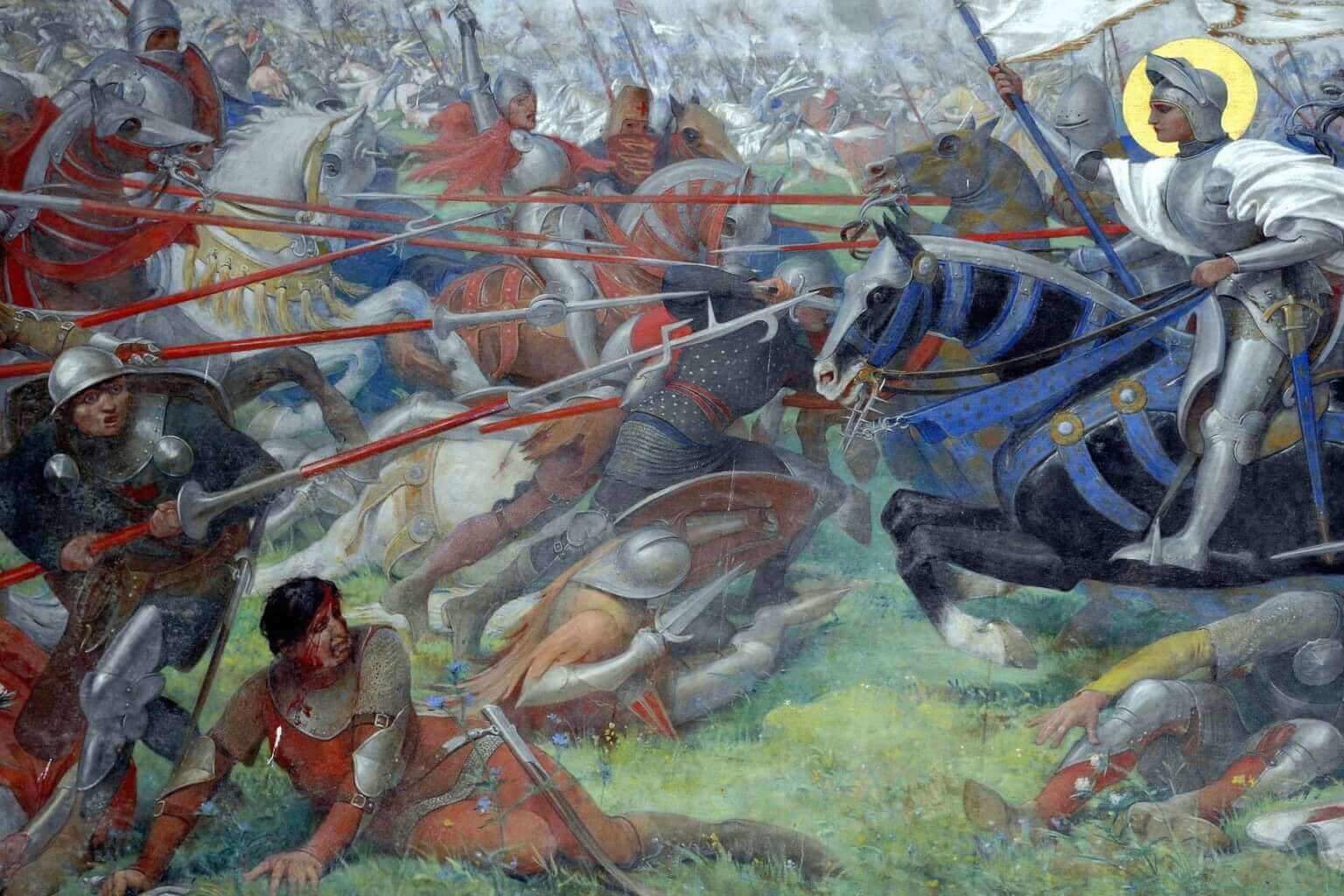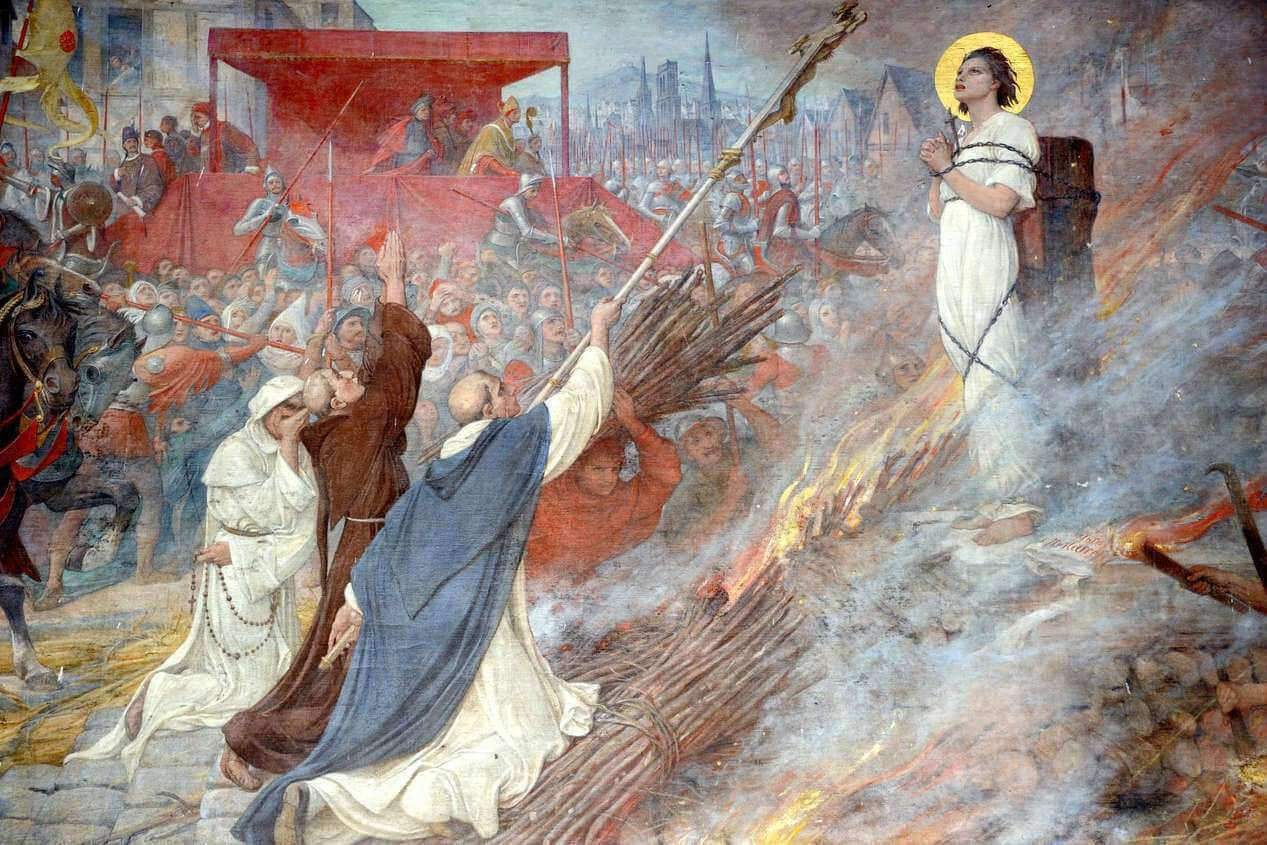No, Joan of Arc was not a shepherdess, no she did not die on a great pyre in Rouen, no she was not called d’Arc, but Joan the Virgin. To put an end to the fake news of the 15th century that our historians have been indiscriminately repeating ever since.
What if it’s all fake? What if the story of the little shepherdess sent from God was just a clever ploy to serve the interests of the Church and the King of France? What if Joan of Arc had not been born in Domrémy and had not died burnt alive at the stake in Rouen on May 30, 1431? An investigation into one of the greatest mysteries of History.
I am a journalist, passionate about the judicial investigation. For more than thirty years, I have been tracking down fake invoices, corrupt elected officials, shady notaries and other hoodlums in suits who are gangrene to our society. I am also passionate about history. This time, I have to solve a six-century-old riddle about one of the world’s best-known historical figures.
Who was Jeanne? Did she really hear voices? Was she raised up by God to save the kingdom of France? What exactly do we know about the extraordinary destiny of this sheepherder from Domrémy? What did she look like? What language did she speak? How did she learn to ride fiery steeds, to wield the sword, to wage war?
I asked myself these questions during an initial investigation of the Virgin. In 2007 I published with Roger Senzig, “The Joan of Arc Affair” (Florent Massot).

Faithful to the dogma
The “official” historians have shouted scandal. The patented medievalists have gone on a crusade against this blasphemous work! And against its main author, a renegade journalist who claims that the Pucelle was not burnt in Rouen.
Colette Beaune immediately took the head of the Inquisition to fight the new heresy. This professor emeritus at Paris X, a specialist in Joan, published a hateful book in 2008: “Joan of Arc. Truths and Legends”. The blood-red band is without appeal: “To put an end to those who talk nonsense! “Nailed to the pillory, the journalist that I am is called a “mythographer”.
Olivier Bouzy, the director of the Joan of Arc Centre in Orléans, who holds a doctorate in medieval history, has metamorphosed into a modern-day Torquemada. In his indictment entitled “Joan of Arc: History in the Place” he denounces the crime of apostasy and calls for the pyre to be burned at the stake.
Guardian of faith in the kingdom of Orthodox Historians, Nicolas Offenstadt, lecturer at Paris 1, specialist in the Middle Ages, did not hesitate to put on the executioner’s clothes in a cruel chronicle published by Le Monde des Livres where he lights the autodafé and throws the unholy book and its author into the fire.
Others will follow. Faithful to the dogma, they throw anathema to the liking of press articles and demand excommunication in a collective forum of the Figaro of April 9, 2009: “Joan of Arc and impostures”.
Why so much hatred six centuries after the trial of the shepherdess? Why is the questioning of official history so disturbing?
The answer seems obvious to me: History must be written once and for all. Heroes, myths, legends are the common good of a whole people. They are examples to be followed, actions to be glorified, figures to be deified in order to serve an ideology, whether political or religious. Or both.
A living myth
Jeanne is no exception to this rule as old as antiquity. As early as the 15th century, the Virgin was a living myth for her contemporaries. She was believed to have miraculous powers. Her armies flew over the fortified walls. Jeanne, saint and warrior, was raised to the rank of national cult in the 19th century after the defeat of Sedan and the annexation of Alsace and Lorraine. Jules Michelet engraved in marble the romanticized story of Joan of Arc. But it was Jules Quicherat who first published a real scientific work by accessing direct sources.
It was on the basis of his scholarly work, in particular, that I carried out my investigation, after having verified and cross-checked the information. Behind the heroine, behind the myth, behind the legend, behind the breastplate and under the halo, I looked for the woman. That woman from the Middle Ages who dared to break all the taboos of her time.
As an investigative journalist, I followed in her footsteps. I read and reread the depositions of the witnesses of the time, I read the trials and the chronicles, of course, I tried to understand the context of the time, that of the Hundred Years War, that of the civil war between Armagnacs and Burgundians. I took a good look at the scene of the pyre.
Little by little, the puzzle came together. Another face of our heroine appeared. Small, brunette, the Pucelle was never called d’Arc, but Jeanne la Pucelle to hide her true identity: Joan of Orleans, because she was probably the daughter of Duke Louis of Orleans and the Queen of France, Isabeau of Bavaria.
Jeanne was never a shepherdess. She said so twice at her trial, on February 22 and 24, 1430. All those who claim, in 1456, that she was a shepherdess are therefore liars. La Pucelle had an excellent intellectual training, she can read and write very well, she confirms it herself and her letters attest it.
Was she born on January 6, 1412? Nothing, absolutely nothing, in the sources proves it. On the contrary, the testimonies plead for a birth around 1407. Did she die at the stake on Wednesday, May 30, 1431? Here again, a serious doubt remains since the woman who perished that day in the flames of Rouen has a “confused face”, i.e. hidden.
However, numerous chronicles and unimpeachable documents attest to the presence of Jeanne la Pucelle between 1436 and 1440 in Arlon (where she married the knight Robert des Armoises) in Orleans, Cologne and elsewhere.
No counter-power
Evidently, the official history was arranged as early as the Middle Ages. Fake news, as they say today, abounds. False testimonies, false documents, false information, manipulation, propaganda are all the more significant as there is no counter-power. Official information is dictated by the king (disobeying the king is disobeying God!) and by the Church. Therefore information that does not have the divine anointing is suspicious, even seditious.
The main part of the life of La Pucelle is known to us by her two trials: the trial of Rouen (from January to May 1431) and the trial of nullity of the condemnation of 1456. But both trials are rigged.
The first one aims at showing that this woman who succeeded in leading Charles VII to Rheims to receive the coronation is a witch. And therefore that the coronation is worthless. King Henry VI of England is also King of France, according to the Treaty of Troyes of 1420.
The second where the 126 witnesses questioned are (almost) all false witnesses. The answers they give to the questions of the monk-investigators are all rigorously identical, to the nearest comma, using a vocabulary that cannot be that of poor illiterate peasants.
The purpose of this second trial is clear: it is to show that the Virgin is not the awful witch condemned in Rouen twenty-five years earlier who led King Charles VII to his coronation in Rheims in July 1429. But that she was a good Christian, a humble young girl, a shepherdess raised in poverty, sent by God to say that Charles was indeed the king chosen by Heaven and not Henry V of England.
And yet, it is from this trial, in particular, that the image of “Jeanne la bonne Lorraine” will impose itself everywhere in the kingdom and even beyond. It is on the basis of these arranged, manipulated, falsified texts that the History of Joan will be written, which we still serve today.
A myth, a legend

After 1870, the defeat of Sedan and the annexation of Alsace and Moselle, Jeanne will return to the news. Echoing the civil war between Armagnacs and Burgundians, on the one hand, and the war against the English occupiers in the 15th century, on the other hand, Jeanne will serve, in the 19th century, as a reconciliatory myth between clerics and anti-clerics. She was beatified in 1909 and canonized in 1920. But she will also serve as an allegory to all the defenders of the threatened Fatherland, no longer against the English, but against the Prussians. With her breastplate and halo, Jeanne embodies both the values of courage and faith that almost all political parties of the left and right have adopted. Her legend is known throughout the world.
But the real Pucelle, what has become of her?
Jeanne died in Lorraine, probably in 1449. She was buried in a small church in Pulligny-sur-Madon, a village near Nancy. Her portrait is kept in an old fortified castle in Jaulny, in Meurthe-et-Moselle.
Can we imagine what would have happened if Jeanne la Pucelle had not existed? Would the kingdom of France have become English? Or would the kingdom of England have been absorbed by the kingdom of France?
Let’s turn together a few pages of our History during which the destiny of France has changed.
(Next: The Hundred Years War: why?)

